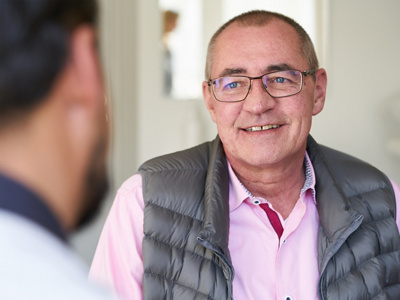With 4,300 new cases every year, lung cancer is one of the most common forms of cancer. Men are affected slightly more often than women.
The lungs are responsible for supplying oxygen to the body and all its organs. The right ventricle of the heart pumps blood into the lungs, where it is saturated with oxygen as it passes through tiny blood vessels.
A gas exchange takes place in the individual alveoli – the blood absorbs oxygen and at the same time waste products such as CO2 are removed from the blood and breathed out.
Lung cancer usually develops from cells in the bronchial mucous membrane. Depending on what the cancer cells look like under the microscope, the disease is either classified as a small cell bronchial carcinoma or a non-small cell bronchial carcinoma. Around 85% of lung cancer diagnoses are non-small cell bronchial carcinomas.
In most cases, there are no obvious symptoms in the early stages of lung cancer. This means that the disease is usually not diagnosed until it has spread. Detecting lung cancer early with a low-dose computed tomography (LDCT) scan can therefore significantly improve the chances of recovery.
Note: Unless otherwise indicated, the figures quoted refer to the average values within Switzerland.






